Although swimbaits were originally designed for fishing for big black bass, they are now widely used in France for fishing for pike, perch and even trout. Swimbait fishing has become so popular that it has become a category in its own right in the world of lure fishing. Here's an article on everything you need to know about swimbait fishing: its history, how to fish it and the different swimbait families.

What is a swimbait?
A swimbait is a swimming fish whose initial purpose is to swim.imitate as much as possible a fish, both in its shape and in its swimming. The swimbait is an imitation lure designed to trigger attacks from hunting fish. When retrieved, this lure is supposed to reproduce the swimming action of real prey such as black bass, pike and other predators. Generally large in size, they often trigger the biggest fish and promise memorable fishing memories for those who know how to be patient.
History of swimbait
The history of swimbaits goes back to the late 80s. Developed in Southern California, the first swimbaits imitated the rainbow trout of the state's large lakes, which black bass mainly feed on. At the same time, swimbaits were also being developed to target coastal striped bass.
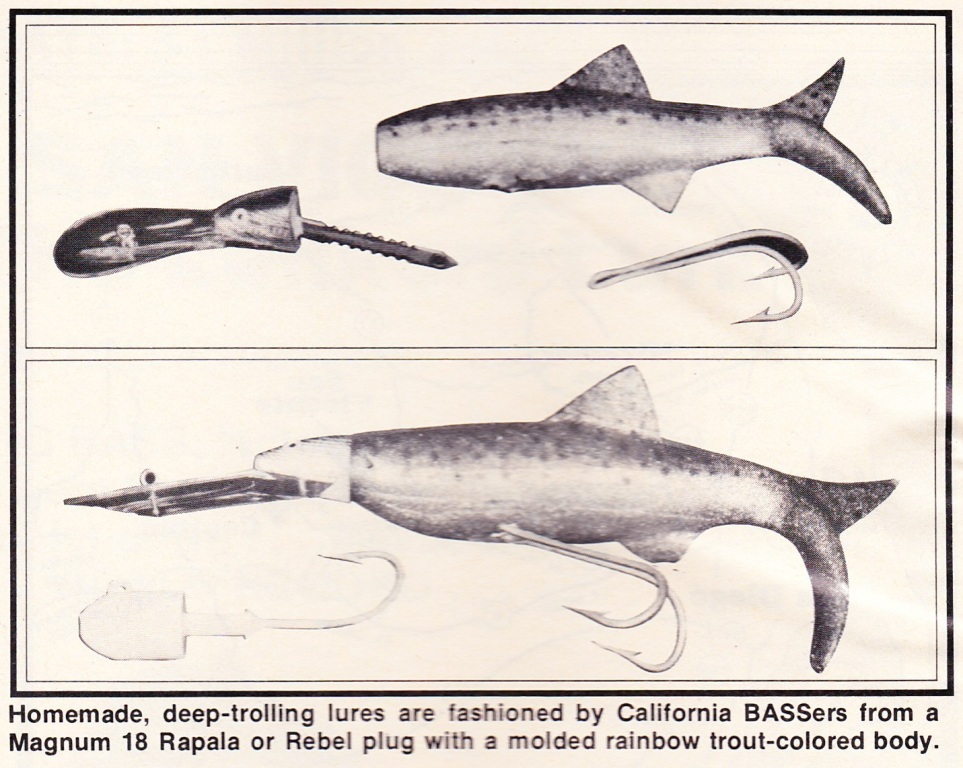
These lures were more realistic and bigger than all the lures used at the time. They were so successful that swimbaits quickly spread to the eastern United States, where they were used in lakes and major competitions.
The Japanese then used it as inspiration to develop their own lures. Many of the swimbaits that have become legendary today have made this lure famous throughout the world. One example is the Mother by Roman Made, at GanCraft Jointed Claw, at Esdrive from Evergreen or even at Deps Slide Swimmer. The aim remained the same: to target the island's big black bass, like the bass from the mythical Lake Biwa.
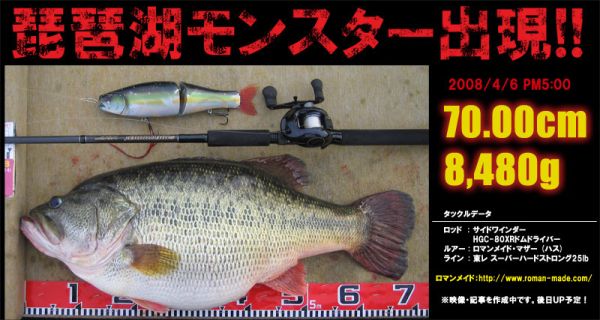
It wasn't until the early 2000s that swimbait really made an appearance in France, with the huge success of the Freddy d'Illex and Spro BBZ-1. Swimbait fishing is becoming increasingly popular, as it can be so effective at catching big pike.
The different types of swimbaits
There are different types of swimbaits designed each time to mimic various species that our predators feed on. They mainly imitate fish but also rodents, small birds or even turtles.
We generally separate the swimbait into two families: hard body swimbaits or hard swimbaits and the soft body swimbaits or soft swimbaits.
Each family is also subdivided into sub-categories, which we will describe to you in more detail.
Hard Swimbaits
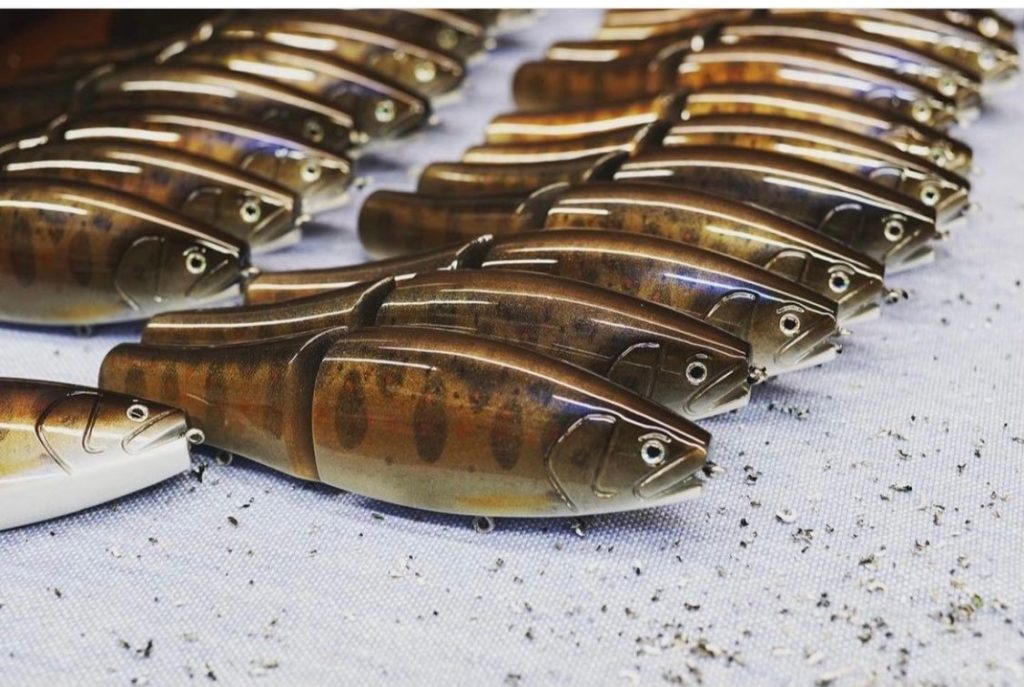
The level of detail in hard swimbaits today is such that they have become veritable collector's items. Some are even being snapped up at gold prices around the world. These include the legendary handmade swimbaits from the Japanese company Roman Made cited above.
As realistic out of the water in their finish as they are underwater in their swimming action, these swimbaits become real weapons of war in the search for trophy fish.
Generally speaking, a hard swimbait has an articulated body to imitate the swimming action of a fish as closely as possible when retrieved. It can be single-jointed or double-jointed. several parts (Multi Jointed) depending on the lure.
Some versions of hard-bodied swimbaits have a lip to accentuate the swimming action. Others don't have a lip for a lighter swimming action.
Swimbait Single Jointed
A single-jointed swimbait is made up of two solid parts attached to each other by a hinged joint. This allows the lure to "swim" in an S shape when retrieved. The junction between the two parts of the lure can be in the middle or near the tail.
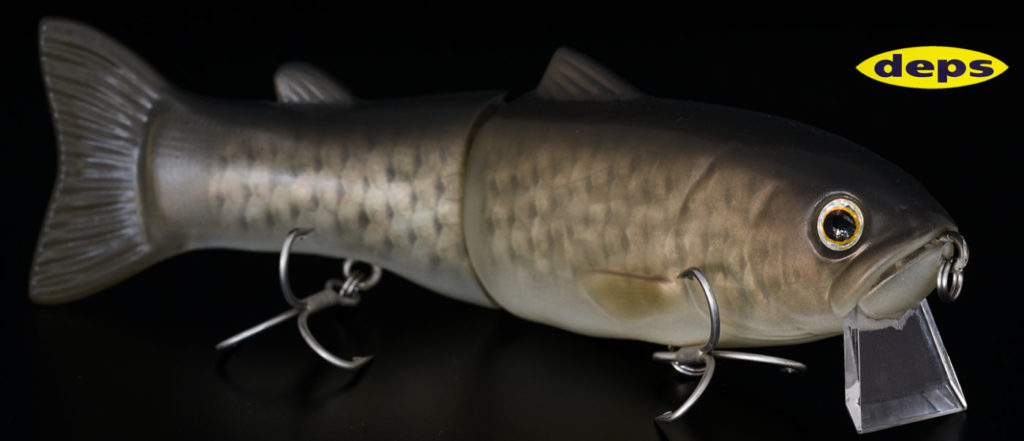
- Here are our top 3 of the best single-jointed swimbaits:
- Deps Silent Killer
- Megabass Vatalion
- DRT Tiny Klash
Swimbait Multi-jointed
A multi-jointed swimbait consists of a body divided into three or more parts, creating an articulated whole. These so-called articulated swimbaits have a wider, smoother swimming action than a Single Jointed model.
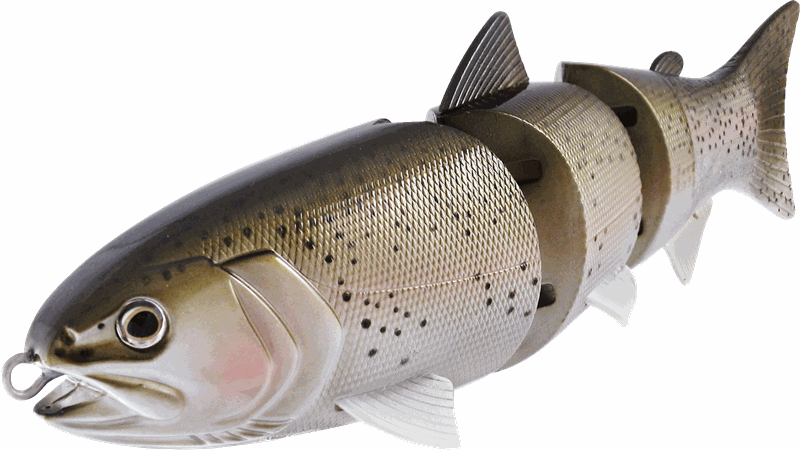
- Here are our top 3 of the best articulated hard swimbaits:
Glide Baits
Glide Baits are generally swimbaits with a more streamlined body profile giving the lure a wider "S" shaped swimming action than a standard hard swimbait.
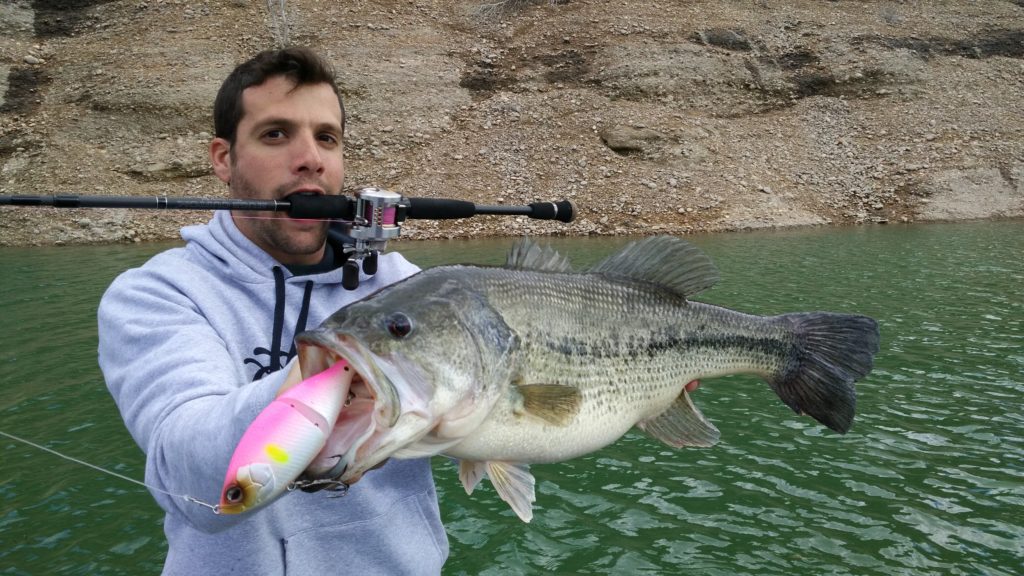
These are excellent lures if you're looking to slow down your presentation in clear water or when the fish are very busy. They work very well as a stop and go lure, in the same way as a jerkbait.
- Here are according to our top 3 best Glide Baits:
- Gan Craft Jointed Claw
- Deps Slide Swimmer
- Evergreen Esflat
Soft Swimbaits
Soft swimbaits are large, flexible lures with more or less hard rubber. Their soft body gives them a more realistic swimming action and their suppleness makes them easier to hook when attacking. The rubber of soft swimbaits is often reinforced to resist wear and repeated attacks by predators.
Here is an overview of the different soft swimbaits available.
Soft swimbait without frame
A soft swimbait without armature is simply a swimbait that is flexible throughout its body. It is fitted with treble hooks attached to the belly in the same way as a hard lure. Many of these lures are not fitted with hooks when purchased and must be taken separately. The eyelet is connected to the hook rings through the body of the lure.
- Here are our top 3 of the best Soft Swimbaits without underwire
- Huddleston Delux 8 ″
- Castaic Hard Head
- Mattlures Dead Twitch
Soft swimbait with frame
Armature soft swimbaits are designed to protect the lure from damage from the inside. The armature passes right through the body of the lure and slides along the line during the fight. This prevents the lure from tearing during the fight and preserves it over time.

- Here is our top 3 of the best soft swimbaits with underwire
- Savage Gear 4-D Line ThruTrout
- Westin Tommy The Trout Inline
- Osprey R-Mac
Soft swimbait with single hook
These soft swimbaits are fitted with a single hook passing through half the body to the dorsal fin. Depending on the model, the hook head may or may not be weighted.
This type of swimbait is ideal for pike fishing in less crowded environments. Some have a ring at the bottom to allow you to add a treble hook.
- Here are our top 3 of the best soft single hook swimbaits
- Fox Rage Replicant
- Huddleston Deluxe 68 Special
- Live Target Blueback Herring
Swimbait fishing
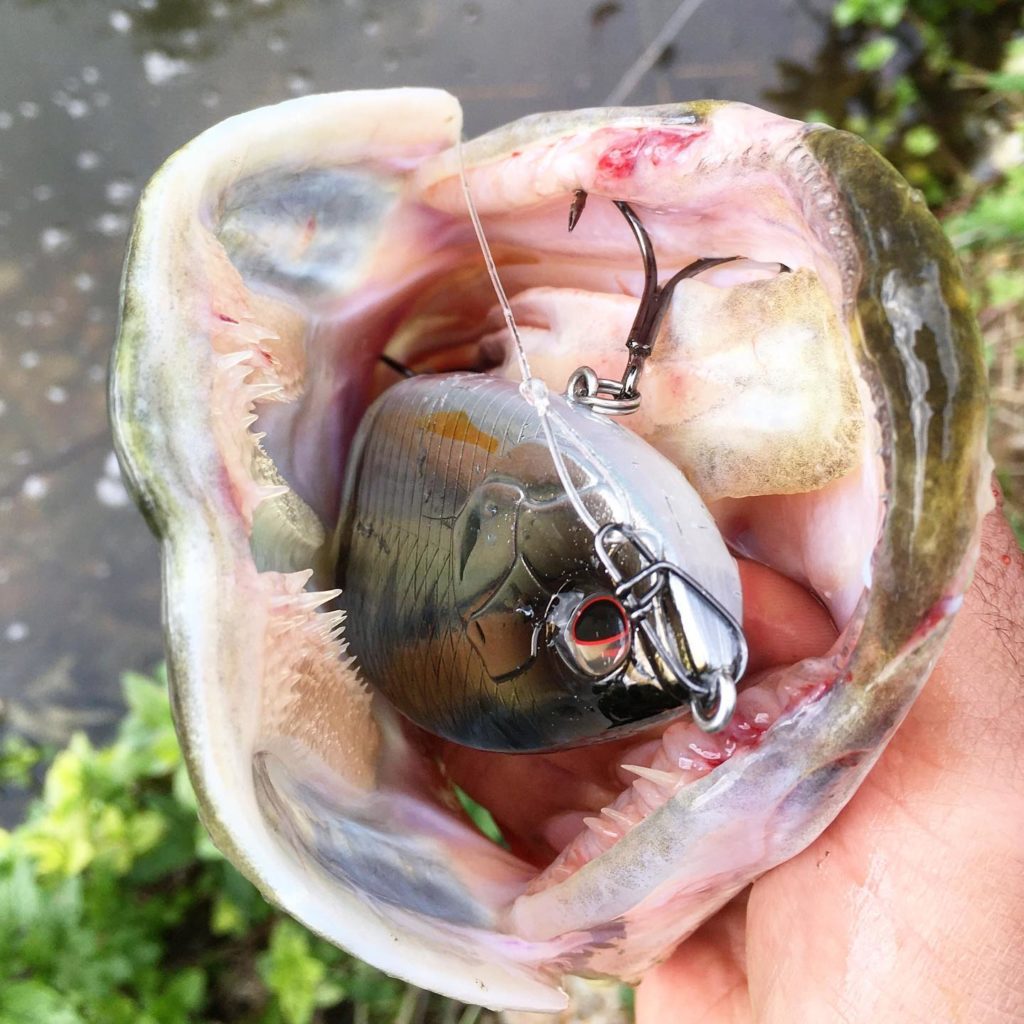
The most difficult part of swimbait fishing is surely being able to be patient. Indeed, the swimbait fishing is often slow fishingThis is where the opportunities for attack are few and far between compared with more conventional lures.
Swimbait fishing also involves a specific material This type of fishing is so heavy that it can be tiring in the long run. But swimbait fishing can more than pay for itself if you're looking for trophy fish and you're mentally tough.
Here's the basic fact you need to know when you're looking for a trophy fish. Whether it's a bass, a pike or a trout, they haven't reached this size without having seen hundreds of lures pass under their noses.
So they've learnt to be wary and to avoid the many traps we've set for them. If they have slipped through the net, it's certainly not for nothing. So it's only natural to be patient if you want to cross paths with these giants one day.
By swimming as close to nature as possible, the swimbait attempts to overcome the mistrust that these large predators have developed over the years through encounters with man and capture.
How to fish with swimbait?
Swimbait fishing has similarities in its action to that of cranckbait. It generally consists of simply throw and bring back your lure in a linear fashion. But as with crankbaits, erratic action can also help trigger an attack.
Large predators are opportunistic fish that like to make the least effort. The key to this type of fishing is to find the slowest and most attractive retrieve speed possible so that the lure can swim properly and trigger the attack of a trophy fish.
The way you retrieve your swimbait depends of course on the layer of water and the season you're fishing.
If you are fishing in early spring in clear waters, choose floating swimbaits or slow sinking. They will imitate the appearance of a dying fish floating and swimming slowly along the surface. With jerky movements, you'll imitate a dying fish to perfection that an opportunistic pike or black bass won't resist. This type of fishing works well in calm water, early in the morning or at the end of the day.
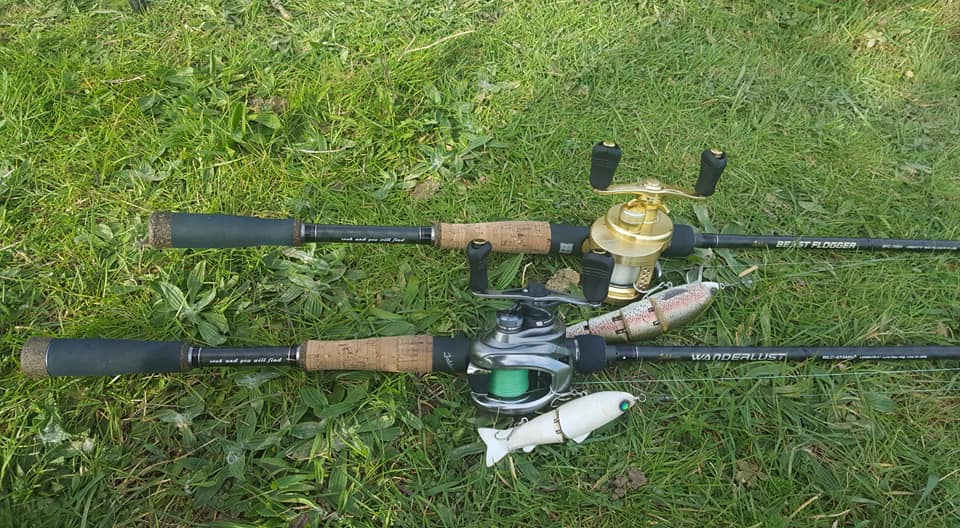
Sinking swimbaits are best suited to cold water fishing where the fish are wedged to the bottom and waiting for a prey fish to pass by. The game here is to fish as slowly as possible to trigger the attack.
How to choose the size and color of your swimbait?
Choosing the right size and the right colour are the two most important factors in choosing a swimbait. Visual appearance plays a vital role in this type of fishing. That's why we prefer to use the most realistic lures possible in clear or lightly tinted water. This generally gives the best results.
If you are familiar with the watercourse you fish and the white fish found there, give priority to fishing with their imitations, both in colour and size.
Tinted water will dull the natural colour perception of black bass, trout and pike. The use of natural colours is therefore not as crucial as in clear water. You can therefore opt for brighter versions to attract the attention of predators.
Fishing equipment for swimbait fishing
One thing is certain, swimbait fishing requires, above all, suitable equipment! A specific rod, reel and line will therefore be required.
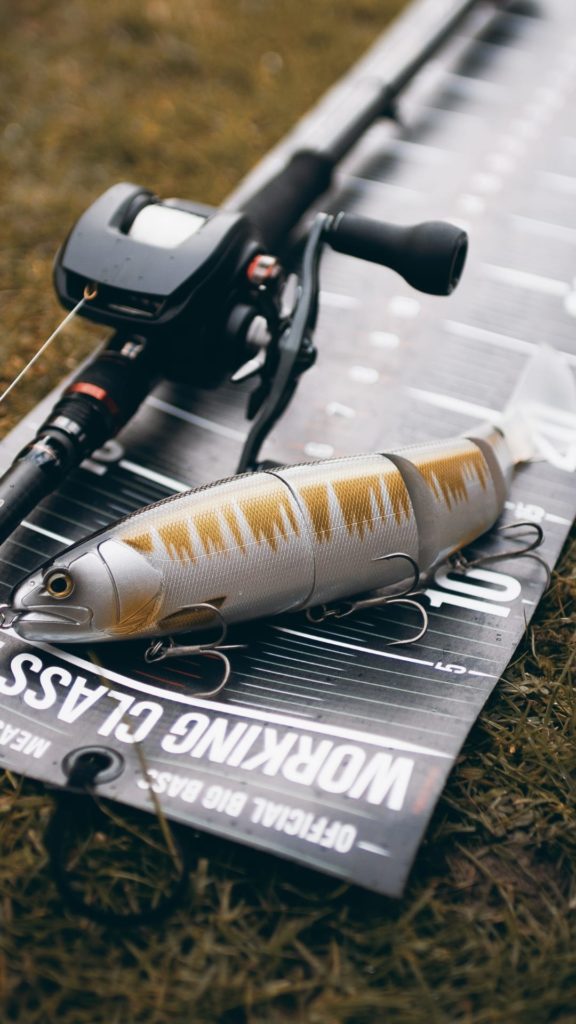
How to choose your swimbait rod?
More than any other lure, you need a special rod to fish with a swimbait that can weigh in at over 100gr. So you need a rod powerful enough to cast these XXL lures but also to handle powerful fighters.
Fortunately, swimbait fishing has now become popular and almost all rod manufacturers offer models suitable for swimbaits. You need to select the best swimbait rod for the size of lure you are fishing with. If you plan to cast a wide range of weights, you'll need a rod in the 1 to 4 oz range.
How to choose your swimbait reel?
In our opinion, there is only one type of reel that will best handle these big lures without tiring too much. It's a casting reel. Choose reels with a low ratio, a high line capacity and a strong drag. These reels wear out faster than a conventional reel when pulling big lures and fighting big fish. A stronger reel will stand the test of time and fish. The most common sizes for swimbait reels are generally size 300 or 400.
Here is our top 3 of the best swimbait reels
- Shimano Calcutta 400
- Shimano Tranx
- Lew's Fishing Super Duty Wide Spool
Which line to choose for swimbait fishing?
For this type of fishing, we personally recommend using 28/100 braid with a fluorocarbon leader for greater discretion. Many anglers also use monofilament of at least seventeen pounds for its discretion and lack of elasticity.
As the monofilament floats, use it for animated swimbaits on or near the surface. If you are fishing with a sinking model, the fluorocarbon is better because it sinks.
But if you're using just one reel and fishing shallow and deep, opt for mono or fluorocarbon as a braid leader.
Useful links to complete this article:
Fishing knot: 5 essential fishing knots to master
How to choose your casting reel?
Lure fishing: Which fishing rod to choose according to the lure used?
Learn to fish with a fishing guide
Find a black bass fishing guide
To read other Rodmaps articles, it's here
